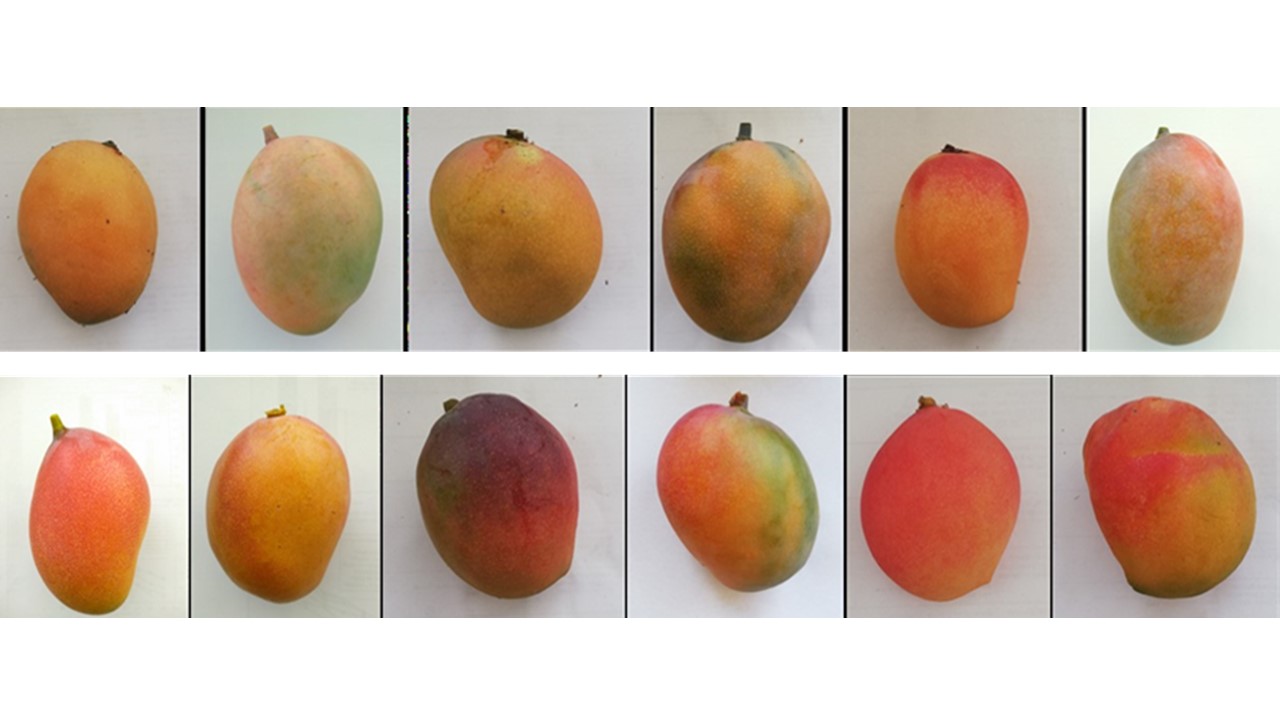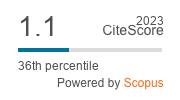Comparative study of mango cultivars at the ready-to-eat stage: The case of Western Crete, Greece, a cool subtropic region of the Mediterranean
DOI:
https://doi.org/10.55779/nsb16211886Keywords:
fruit characteristics, fruit quality, Mangifera indica, Mediterranean, quality characteristicsAbstract
With the expansion of the mango consumer market, exports of the product have increased. The harvest time effects quality characteristics, which identify the quality and consequently the price of the product. Greece is very close to the European markets, so mango fruits can be transferred at a ready-to-eat stage and minimize the distance between harvest maturity and edibility. On this research we studied the characteristics of twelve mango cultivars (‘Carrie’, ‘Keitt’, ‘Kensington’, ‘Kent’, ‘Lippens’, ‘Osteen’, ‘Palmer’, ‘Sabre’, ‘Sensation’, ‘Tommy Atkins’, ‘Van Dyke’ and ‘Zill’) in Greece. The parameters measured were the harvest time, fruit weight and size, fruit firmness, juice pH, soluble solid components, dry matter, ascorbic acid, total sugars and acidity. The first fruits were harvested ready-to-eat, at the first days of August. Fruit firmness was from 4.28 K/cm2 (‘Sensation’), to 1.55 (‘Lippens’). The pH level ranged from 3.64 (‘Van Dyke’) to 4.52 (‘Osteen’). Total soluble solids were 19.84% Brix in ‘Kent’, different from ‘Osteen’ (16.33%). ‘Kent’ had the highest dry matter concentration (25.3%). The higher amount of ascorbic acid (Vit C) was measured in ‘Palmer’ (82.79 mg/100 g juice). Total sugar was the highest in ‘Tommy Atkins’ (24.82 g glucose/100 g juice) and the lowest in ‘Palmer’ (6.51 g glucose/100 g juice). The lowest acidity was observed in ‘Lippens’ (0.16%). Our results indicate that Greece can offer fruit production of high quality, at the ready-to-eat stage. Our results are the first data of mango cultivation in Greece, a region of Europe where mango crop is gaining ground on the market.
Metrics
References
Albalasmeh AA, Berhe AA, Ghezzehei TA (2013). A new method for rapid determination of carbohydrate and total carbon concentrations using UV spectrophotometry. Carbohydrate Polymers 97:253-261. https://doi.org/10.1016/j.carbpol.2013.04.072
Amaral MH, Walsh K.B (2023). In: Orchard Sizing of Mango Fruit: 2. Forward Estimation of Size at Harvest. Horticulturae 9:54. http://dx.doi.org/10.3390/horticulturae9010054
Anthon GE, LeStrange M, Barrett DM (2011). Changes in pH, acids, sugars and other quality parameters during extended vine holding of ripe processing tomatoes. Journal of the Science of Food and Agriculture 91:1175-1181. http://dx.doi.org/10.1002/jsfa.4312
Barua G, Mondal M (2004). Chemical changes in mango as influenced by different postharvest treatments. Journal of Bangladesh Agricultural University 2:47-53.
Chung SW, Oh H, Lim CK, Jeon MK, An HJ (2021). Fruit characteristics of ten greenhouse-grown mango varieties during postharvest ripening at ambient temperature and relative humidity. International Journal of Fruit Science 21(1):1073-1085. https://doi.org/10.1080/15538362.2021.1990185
Crane JH, Balerdi CF, Maguire I (2006). Mango Growing in the Florida Home Landscape: HS2/MG216, rev. 10/2005. EDIS 2006(18). https://doi.org/10.32473/edis-mg216-2006
Famiani F, Baldicchi A, Farinelli D, Cruz-Castillo JG, Marocchi F, Mastroleo M, ... Battistelli A (2012). Yield affects qualitative kiwifruit characteristics and dry matter content may be an indicator of both quality and storability. Scientia Horticulturae 146:124-130. https://doi.org/10.1016/j.scienta.2012.08.009
FAO (2023). Major Tropical Fruits Market Review – Preliminary results. Data Collection from: https://www.fao.org/statistics/data-collection/en/
Farina V, Gentile C, Sortino G, Gianguzzi G, Palazzolo E, Mazzaglia A (2020). Tree-ripe mango fruit: physicochemical characterization, antioxidant properties and sensory profile of six Mediterranean-grown cultivars. Agronomy 10:884. https://doi.org/10.3390/agronomy10060884.
Feng X, Sun H, Xu F, He X, Cheng L (2013). Effect of 1-Octylcyclopropene, as an ethylene action inhibitor and compared with 1-MCP, on storage quality of “Guifei” mango fruits in cold storage. Journal of Food Science and Biotechnology 32:460-468. http://dx.doi.org/10.3969/j.issn.1673-1689.2013.05.003
Flores-Hernández BK, Arévalo-Galarza ML, San Miguel-Chávez R, Espinosa Zaragoza S, Pérez-Díaz ND, Aguilar-Rincón VH (2023). Post-harvest characteristics of mango fruits (Mangifera sp.) from Soconusco, Chiapas. Agrociencia. https://doi.org/10.47163/agrociencia.v57i1.2546
Gentile C, Gregori, ED, Stefano VD, Mannino G, Perrone A, Avellone G, Sortino G, Inglese P, Farina V (2019). Food quality and nutraceutical value of nine cultivars of mango (Mangifera indica L.) fruits grown in mediterranean subtropical environment. Food Chemistry 277:471-479. https://doi.org/10.1016/j.foodchem.2018.10.109.
Han S-H, Kim J-S, Teruya T, Teruya Y, Moromizato I, Lim CK (2016). Comparison of the fruit qualities, the free radical scavenging activities and mangiferin content of the mango, cv. Irwin cultivated in Jeju and Okinawa. Korean Journal of Horticultural Science and Technology 34(4):634-643. http://dx.doi.org/10.12972/kjhst.20160065
Helmenstine AM (2019). Use iodine titration to determine the amount of Vitamin C in food. Retrieved from: https://www.thoughtco.com/vitamin-c-determination-by-iodine-titration-606322
Hofman PJ, Smith LG, Meiburg, GF, Giles JE (1997). Production locality affects mango fruit quality. Australian Journal of Experimental Agriculture 37:801-808. https://doi.org/10.1071/EA97058.
Igwemmar N, Kolawole S, Imran I (2013). Effect of heating on vitamin C content of some selected vegetables. International Journal of Scientific and Technology Research 2:209-212.
Javed S, Fu H, Ali A, Nadeem A, Amin M, Razzaq K, Ullah S, Rajwana IA, Nayab S, Ziogas V (2022). Comparative response of mango fruit towards pre- and post-storage quarantine heat treatments. Agronomy 12:1476. https://doi.org/10.3390/agronomy12061476
Ke Y, Dai T, Xiao M, Chen M, Liang R, Liu W, Deng L (2022). Industry-scale microfluidizer system produced whole mango juice: Effect on the physical properties, microstructure and pectin properties. Innovative Food Science and Emerging Technologies 75:102887. http://dx.doi.org/10.1016/j.ifset.2021.102887
Khairul Islam Md, Khan MZH, Sarkar MAR, Absar N, Sarkar SK (2013). Changes in acidity, TSS, and sugar content at different storage periods of the postharvest mango (Mangifera indica L.) influenced by Bavistin DF. International Journal of Food Science Article ID 939385. https://doi.org/10.1155/2013/939385
Kulkarni MM, Burondkar MM, Dalvi NV, Salvi BR, Haldankar PM, Bhattacharyya T (2019). Mango fruit size diversity found in Konkan. Advanced Agricultural Research and Technology Journal 3(1):43-46.
Laxman RH, Annapoornamma CJ, Biradar G (2016). Mango. In: Rao N, Shivashankara K, Laxman R (Eds). Abiotic Stress Physiology of Horticultural Crops. ISBN: Springer, pp 169-181.
Liguori G, Gentile C, Sortino G, Inglese P, Farina V (2020). Food quality, sensory attributes and nutraceutical value of fresh ‘Osteen’ mango fruit grown under mediterranean subtropical climate compared to imported fruit. Agriculture 10(4). https://doi.org/10.3390/agriculture10040103.
Lim CK, Oh HS, Ahn HJ, Jeon MK (2020). Growth stage and flowering characteristics of mango in response to different night air temperature. Annual Autumn Conference of the Korean Society for Horticulture Science 5-11 November, e-Conference, Republic of Korea 140.
Liu B, Jiao W, Wang B, Shen J, Zhao H, Jiang W (2019). Near freezing point storage compared with conventional low temperature storage on apricot fruit flavor quality (volatile, sugar, organic acid) promotion during storage and related shelf life. Scientia Horticulturae 249:100-109. https://doi.org/10.1016/j.scienta.2019.01.048
Liu B, Xin Q, Zhang M, Chen J, Lu Q, Zhou X, Li X, Zhang W, Feng W, Pei H, Sun J (2023). Research progress on mango post-harvest ripening physiology and the regulatory technologies. Foods 12:173. https://doi.org/10.3390/foods12010173
Lobo MG, Sidhu JS (2017). Biology, postharvest physiology, and biochemistry of mango. In: Siddiq M, Brecht JK, Sidhu JS (Eds). Handbook of Mango fruit: Production, Postharvest Science, Procession Technology, and Nutrition. ISBN: 978-11-190-1435-5, Wiley, pp 37-59.
Luna-Esquivel G, Arévalo-Galarza ML, Anaya-Rosales S, Villegas-Monter A, Acosta-Ramos M, Leyva-Ruelas G (2006). Calidad de mango ‘Ataulfo’ sometido a tratamiento hidrotérmico. Revista Fitotecnia Mexicana 29(2):123-128. http://dx.doi.org/10.35196/rfm.2006.Especial_2.123
Nambi V, Thangavel K, Jesudas D (2015). Scientific classification of ripening period and development of colour grade chart for Indian mangoes (Mangifera indica L.) using multivariate cluster analysis. Scientia Horticulturae 193:90-98. https://doi.org/10.1016/j.scienta.2015.05.031
Nordey T, Léchaudel M, Saudreau M, Joas J, Génard M (2014). Model-assisted analysis of spatial and temporal variations in fruit temperature and transpiration highlighting the role of fruit development. PLoS One 9(3):e92532. https://doi.org/10.1371/journal.pone.0092532
Normand F, Lauri PE, Legave JM (2015). Climate change and its probable effects on mango production. Acta Horticulturae 1075:21-31. https://doi.org/10.17660/ActaHorticulturae.2015.1075.1.
Prasanna V, Prabha TN, Tharanathan RN (2006). Multiple forms of polygalacturonase from mango (Mangifera indica L. cv Alphonso) fruit. Food Chemistry 95:30-36. https://doi.org/10.1016/j.foodchem.2004.12.014
Ramírez F, Davenport TL, Fischer G, Pinzón JCA, Ulrichs C (2014). Mango trees have no distinct phenology: The case of mangoes in the tropics. Scientia Horticulturae 168:258-266. https://doi.org/10.1016/j.scienta.2014.01.040
Santos Neto JPD, Leite GWP, Oliveira GDS, Cunha Júnior LC, Gratão PL, Morais CDLMD, Teixeira, GHDA (2018). Cold storage of ‘Palmer’ mangoes sorted based on dry matter content using portable near infrared (VIS-NIR) spectrometer. Journal of Food Processing and Preservation 42(6):e13644. https://doi.org/10.1111/jfpp.13644
Tao X, Wu Q, Huang S, Zhu B, Chen F, Liu B, Ying T (2022). Exogenous abscisic acid regulates primary metabolism in postharvest cherry tomato fruit during ripening. Scientia Horticulturae 299:111008. http://dx.doi.org/10.1016/j.scienta.2022.111008
Tharanathan RN, Yashoda HM, Prabha TN (2006). “The king of fruits”: An overview. Food Reviews International 22:95-123. https://doi.org/10.1080/87559120600574493
Tiyagi S, Sahay S, Imran M, Rashmi K, Mahesh SS (2017). Pre-harvest factors influencing the postharvest quality of fruits: A review. Current Journal of Applied Science and Technology 23(4):1-12. https://doi.org/10.9734/CJAST/2017/32909
Vega-Vega V, Silva-Espinoza BA, Cruz-Valenzuela MR, Bernal-Mercado AT, González-Aguilar GA, Ruiz-Cruz S, … Ayala-Zavala JF (2013). Antimicrobial and antioxidant properties of byproduct extracts of mango fruit. Journal of Applied Botany and Food Quality 86(1):205-211. https://doi.org/10.5073/JABFQ.2013.086.028
Vicente AR, Manganaris GA, Darre M, Ortiz CM, Sozzi GO, Crisosto CH (2022). Compositional determinants of fruit and vegetable quality and nutritional value. In: Florkowski WJ, Banks NH, Shewfelt RL, Prussia SE (Eds). Postharvest Handling. Academic Press, pp 565-619.
Wauthoz N, Balde A, Balde ES, Damme MV, Duez P (2007). Ethnopharmacology of Mangifera indica L. bark and pharmacological studies of its main C-glucosylxanthone, mangiferin. International Journal of Biomedical and Pharmaceutical Science 1:112-119.

Downloads
Published
How to Cite
Issue
Section
License
Copyright (c) 2024 Thiresia-Teresa TZATZANI, Stavros FILIPPIDIS, Georgios KALANTZAKIS

This work is licensed under a Creative Commons Attribution 4.0 International License.
Papers published in Notulae Scientia Biologicae are Open-Access, distributed under the terms and conditions of the Creative Commons Attribution License.
© Articles by the authors; licensee SMTCT, Cluj-Napoca, Romania. The journal allows the author(s) to hold the copyright/to retain publishing rights without restriction.
License:
Open Access Journal - the journal offers free, immediate, and unrestricted access to peer-reviewed research and scholarly work, due SMTCT supports to increase the visibility, accessibility and reputation of the researchers, regardless of geography and their budgets. Users are allowed to read, download, copy, distribute, print, search, or link to the full texts of the articles, or use them for any other lawful purpose, without asking prior permission from the publisher or the author.













.png)















